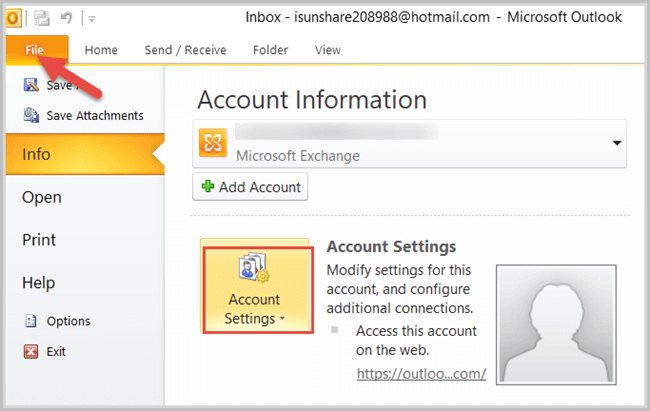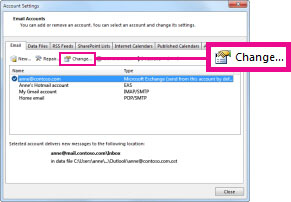MS Office - 2016 Regedit to turn off cached mode on Outlook 2016. By Ertech in forum Office Software Replies: 5 Last Post: 20th April 2021, 12:30 PM. Where is 14.0 for Outlook 2010, 15.0 for Outlook 2013, or 16.0 for Outlook 2016. Note that we're in HKLM here, so it will be a system-wide setting, instead of HKCU, which is where the GPO would use the same key for the user-specific setting. This key isn't exposed in the Office.ADMX files for some reason, but it does work. I've tested it myself in Outlook 2010 and 2013 on Windows 7, 10, 2008, and 2008 R2. Anecdotal internet evidence says it should work fine for Outlook 2016, as well, and on any Windows version. I haven't had a chance to test with Outlook 2007. For system recommendations for using Cached Exchange Mode, see the section Outlook Cached Mode Recommendations below. Note: if you want to turn off Cached Exchange Mode, follow the same steps, but make sure that the box next to Use Cached Exchange Mode is unchecked. In Outlook 2013/2016/2019: In Outlook, go to the File Account Settings, then. No, Administrator permissions did not allow me to turn off cached exchange mode. The regedit instructions above were fine, except that there is no OST key entry for Office 16 (365 subscription). I have to change data files since I don’t use hotmail calendar or contacts.

The key we're interested in is:

[HKEY_LOCAL_MACHINESOFTWAREPoliciesMicrosoftOffice<version>OutlookOST]
Where <version> is 14.0 for Outlook 2010, 15.0 for Outlook 2013, or 16.0 for Outlook 2016.
Note that we're in HKLM here, so it will be a system-wide setting, instead of HKCU, which is where the GPO would use the same key for the user-specific setting.
If you have a User GPO that forces Cached Exchange Mode ON, like I do, the registry entry here will override it, since it's a Machine policy, This allows us to achieve the desired behavior -- enforcing a policy 'exception' for this particular machine.
In the registry key referenced above, create a new DWORD value called NoOST. Set it according to your requirements:
0 = An OST is created by default and used for calendar caching. You can enable offline access and use the offline store. This is the default if the NoOST entry is missing.
1 = An OST is set up by default and used for calendar caching. Users cannot enable offline access or use the offline store. The options in the Exchange Server properties are not available.
2 = An OST is not set up by default and you cannot enable offline access or use an offline store. The options in the Microsoft Exchange Server properties are not available.
3 = An OST is not set up for Online mode. Users can enable offline access and use the offline store.
Introduction to Exchange Cache Mode
In this Mode, a replica of your mailbox data is stored on your computer. This mailbox replica provides quick access to your data, and it is regularly updated with the server that runs Microsoft Exchange. If you work Offline, whether by choice or due to connection problem, your data is still available to you instantly in OST format & whenever you require you can view your OST file. Any changes that you make while server connection is unavailable are automatically synchronized once the connection is regained. However, you can continue to work while the changes are synchronized.
Introduction to Online Mode
Outlook 2016: 'Use Cached Exchange Mode' Option Is Grayed Out ...
This mode helps you to reads the emails or accesses your information directly from the Exchange Server. It just downloads the “stub” to show the user that emails are available. Online mode uses are typically those who have large mailboxes or change computers on regular basis. The computers with security compliance regulations may also require Online Mode.
Difference Between Exchange Cache And Online Mode
Turn Off Cached Mode Outlook 2016 Registry
- Cached mode takes a while to download all the messages on the first use and take lots of space and compared to online mode.
- Depending on the mode you are using, different features of cached and Online Mode becomes available in Outlook.
- If you are running Outlook in Cached Mode, you can search emails with specific conditions whereas in online mode you don’t need to search email with specific conditions.
- Searching can be indexed locally and therefore be faster in Cached Mode compared to online mode.
- Emails search works in Online Mode but doesn’t really work in cache mode.
How to Turn On or Off Cached Exchange Mode?
1. Click the File tab
2. Go to Account Settings and click Account Settings
3. On the E-Mail tab, click the Exchange Account, and then click Change. Under the Microsoft Exchange Server section, select the Use “Cached Exchange Mode” check box

4. Now Exit and Restart Microsoft Outlook
How to Turn Cached Exchange Mode Off?
To turn this mode Off, performs the same steps as discussed above. Under the Microsoft Exchange Server section, uncheck the checkbox for Use Cached Mode. Again, Exit and restart Outlook.

NOTE: An E-mail message may remain in Outlook for one minute until the next synchronization occurs with the server running Exchange while Cached Exchange mode is in use. Alternatively, if you want to send the message immediately then follow the given steps:
Go to Send/Receive All Folder tab, in the Send/Receive option, click on Send All
Issues Occurred In Turning On Cached Exchange Mode
These might be the reasons if you are unable to turn on Cache Mode. If following is the list of errors then you can easily resolve them.
Issue -> If you do not have an Exchange e-mail account configured on Outlook.
Solution -> It requires your Outlook profile to contain an Exchange account
Issue -> If your Exchange administrator has disabled this functionality.
Solution -> Your Exchange administrator has the ability to disable this functionality. Therefore, you can contact him to discuss about this.
Issue -> You have installed Microsoft Terminal Services.
Solution -> Cache Mode uses an offline folder file (.ost) so that it cannot bcae used if you have installed Microsoft Terminal Services.
Conclusion
This blog is put forward to bring into the users’ awareness about how they can work in Exchange Cache Mode and Online Mode. In addition, the comparison between the two has been done to describe each service well. At last, we came to this point that Cache mode is more stable as compared to online mode.
Comments are closed.